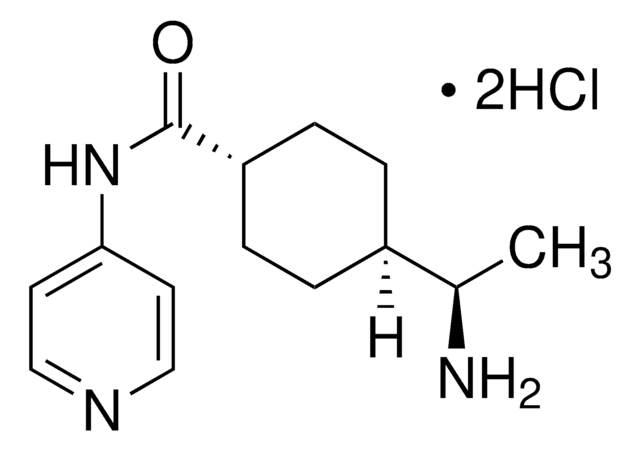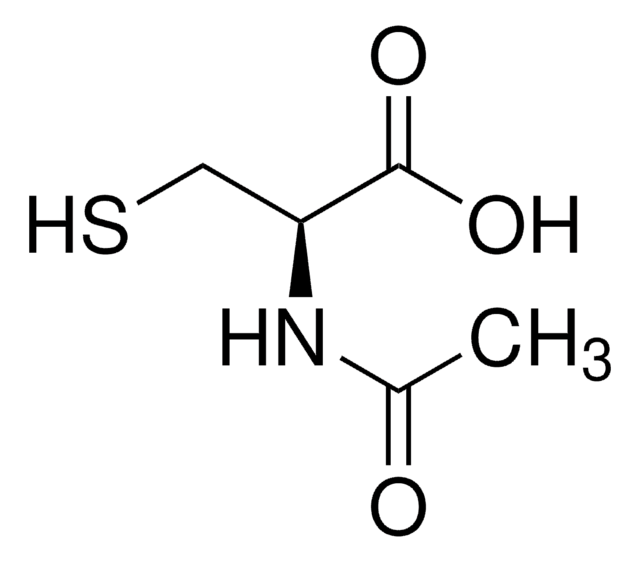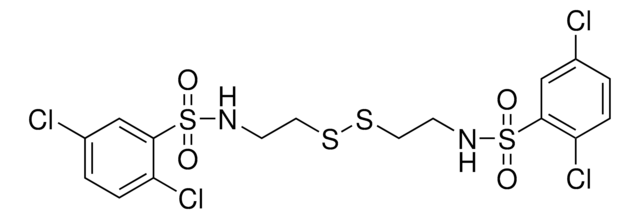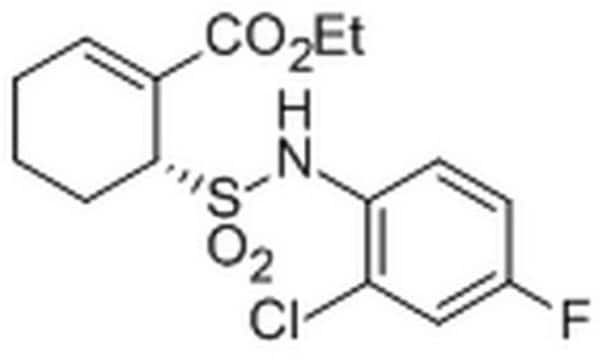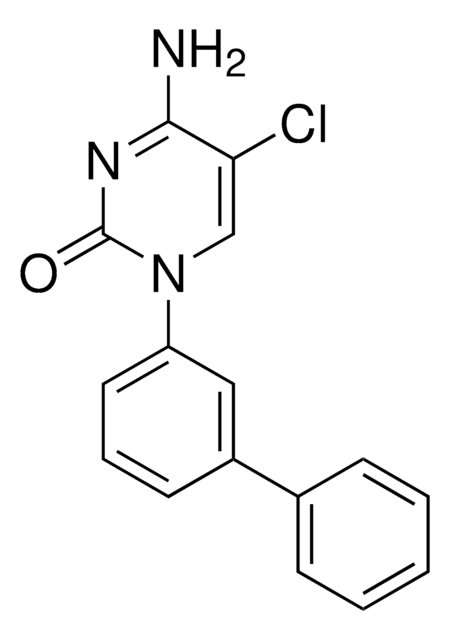F8807
FM19G11
≥98% (HPLC)
동의어(들):
3-[(2,4-Dinitrobenzoyl)amino]-benzoic acid 2-(4-methylphenyl)-2-oxoethyl ester, [2-oxo-2-(p-tolyl)ethyl] 3-[(2,4-dinitrobenzoyl)amino]benzoate
로그인조직 및 계약 가격 보기
모든 사진(1)
About This Item
실험식(Hill 표기법):
C23H17N3O8
CAS Number:
Molecular Weight:
463.40
MDL number:
UNSPSC 코드:
12352200
PubChem Substance ID:
NACRES:
NA.77
추천 제품
Quality Level
분석
≥98% (HPLC)
양식
powder
색상
off-white to light brown
solubility
DMSO: ≥40 mg/mL
저장 온도
2-8°C
SMILES string
Cc1ccc(cc1)C(=O)COC(=O)c2cccc(NC(=O)c3ccc(cc3[N+]([O-])=O)[N+]([O-])=O)c2
InChI
1S/C23H17N3O8/c1-14-5-7-15(8-6-14)21(27)13-34-23(29)16-3-2-4-17(11-16)24-22(28)19-10-9-18(25(30)31)12-20(19)26(32)33/h2-12H,13H2,1H3,(H,24,28)
InChI key
XVUOIWIIQVGWAJ-UHFFFAOYSA-N
애플리케이션
FM19G11 has been used as ahypoxia-inducible factor-1α (HIF- 1α):
- to study the effects ofFM19G11-loaded gold nanoparticles (NPs) on self-renewal and proliferation of ependymal stem progenitor cells (epSPCs) of mice
- to study its effects on the O6-methylguanine DNA-methyltransferase (MGMT) expression in glioblastoma (GBM) cells
- to study its effects on microphthalmia-associated transcription factor (MITF) expression in melanoma cell line
생화학적/생리학적 작용
FM19G11 is an inhibitor of Hypoxia Inducible Factor α (HIFα), reported to affect self-renewal and differentiation of stem cells.
FM19G11 is an inhibitor of Hypoxia Inducible Factors α (HIFα), reported to affect self-renewal and differentiation of stem cells. Hypoxia-inducible factors (HIFs) are transcription factors that respond to changes in available oxygen in the cellular environment. Among other functions (like angiogenesis), HIFα proteins affect the self-renewal and the differentiation processes of stem cells. FM19G11 inhibits the HIFα proteins that repress the target genes of the two α subunits, in various tumor cell lines as well as in adult and embryonic stem cell (ESC) models.
Storage Class Code
11 - Combustible Solids
WGK
WGK 3
Flash Point (°F)
Not applicable
Flash Point (°C)
Not applicable
가장 최신 버전 중 하나를 선택하세요:
Sung Ji Choi et al.
PloS one, 8(3), e58662-e58662 (2013-03-23)
Although both glucose deprivation and hypoxia have been reported to promote cascades of biological alterations that lead to induction of inflammatory mediators, we hypothesized that glucose deprivation and hypoxia might show neutral, synergistic or antagonistic effects to each other on
UV-protection timer controls linkage between stress and pigmentation skin protection systems
Malcov B, et al.
Molecular Cell, 72(3), 444-456 (2018)
Chao-Guo You et al.
Cancer medicine (2018-05-16)
FM19G11 is a small molecular agent that inhibits hypoxia-inducible factor-1-alpha (HIF-1α) and other signaling pathways. In this study, we characterized the modulating effects of FM19G11 on O6 -methylguanine DNA-methyltransferase (MGMT), the main regulator of temozolomide (TMZ) resistance in glioblastomas. This
Kazuhiko Yamamura et al.
Nature communications, 8, 13946-13946 (2017-01-10)
Mutations of DOCK8 in humans cause a combined immunodeficiency characterized by atopic dermatitis with high serum IgE levels. However, the molecular link between DOCK8 deficiency and atopic skin inflammation is unknown. Here we show that CD4
Kacper A Wojtal et al.
American journal of physiology. Gastrointestinal and liver physiology, 307(7), G673-G688 (2014-06-28)
Solute carrier (SLC) transporters mediate the uptake of biologically active compounds in the intestine. Reduced oxygenation (hypoxia) is an important factor influencing intestinal homeostasis. The aim of this study was to investigate the pathophysiological consequences of hypoxia on the expression
자사의 과학자팀은 생명 과학, 재료 과학, 화학 합성, 크로마토그래피, 분석 및 기타 많은 영역을 포함한 모든 과학 분야에 경험이 있습니다..
고객지원팀으로 연락바랍니다.